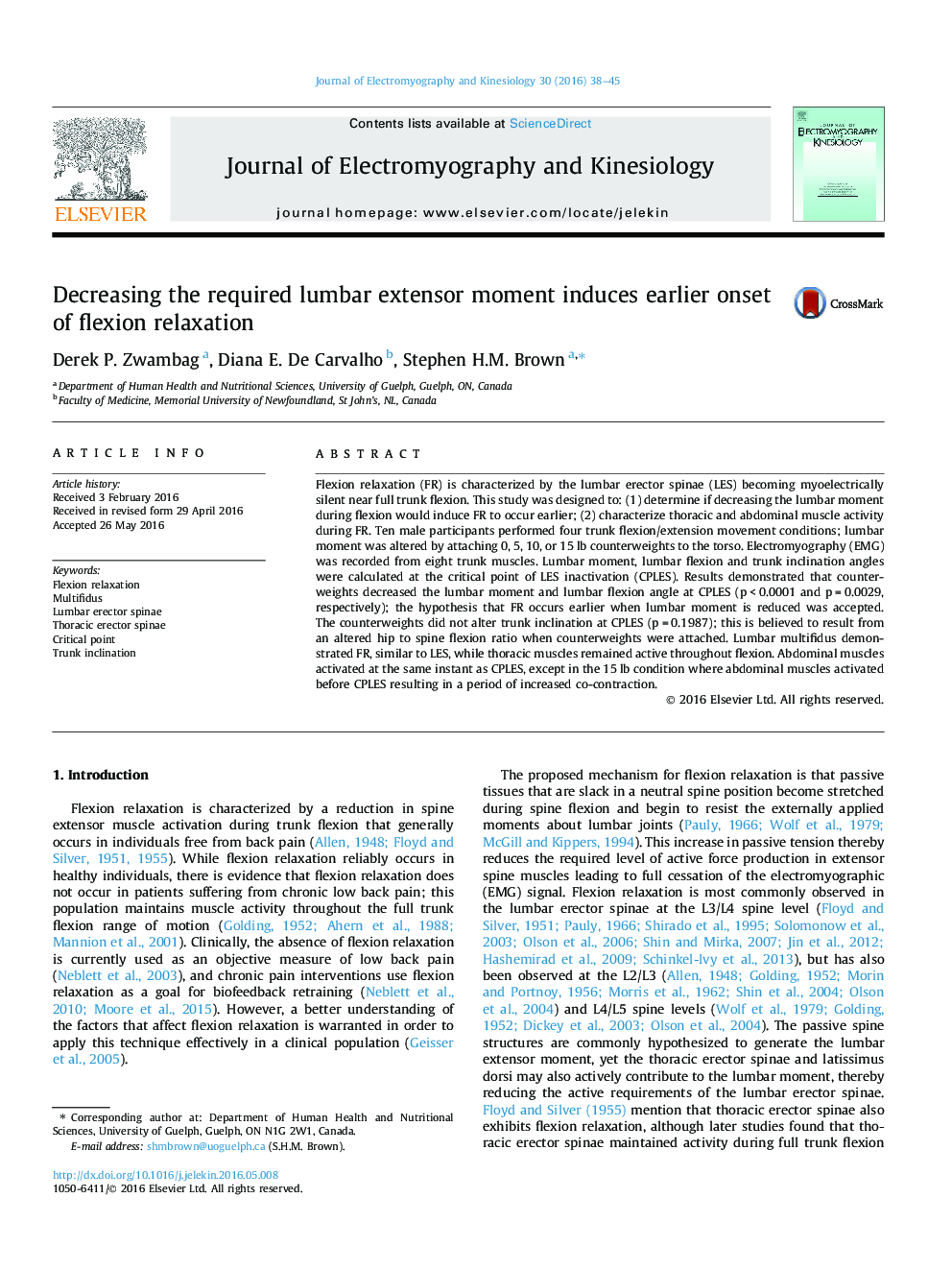| Article ID | Journal | Published Year | Pages | File Type |
|---|---|---|---|---|
| 4064361 | Journal of Electromyography and Kinesiology | 2016 | 8 Pages |
Abstract
Flexion relaxation (FR) is characterized by the lumbar erector spinae (LES) becoming myoelectrically silent near full trunk flexion. This study was designed to: (1) determine if decreasing the lumbar moment during flexion would induce FR to occur earlier; (2) characterize thoracic and abdominal muscle activity during FR. Ten male participants performed four trunk flexion/extension movement conditions; lumbar moment was altered by attaching 0, 5, 10, or 15 lb counterweights to the torso. Electromyography (EMG) was recorded from eight trunk muscles. Lumbar moment, lumbar flexion and trunk inclination angles were calculated at the critical point of LES inactivation (CPLES). Results demonstrated that counterweights decreased the lumbar moment and lumbar flexion angle at CPLES (p < 0.0001 and p = 0.0029, respectively); the hypothesis that FR occurs earlier when lumbar moment is reduced was accepted. The counterweights did not alter trunk inclination at CPLES (p = 0.1987); this is believed to result from an altered hip to spine flexion ratio when counterweights were attached. Lumbar multifidus demonstrated FR, similar to LES, while thoracic muscles remained active throughout flexion. Abdominal muscles activated at the same instant as CPLES, except in the 15 lb condition where abdominal muscles activated before CPLES resulting in a period of increased co-contraction.
Related Topics
Health Sciences
Medicine and Dentistry
Orthopedics, Sports Medicine and Rehabilitation
Authors
Derek P. Zwambag, Diana E. De Carvalho, Stephen H.M. Brown,
